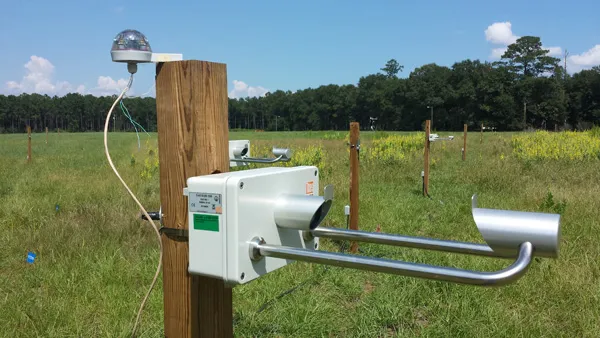
SPLASHDOWN Scientists have confirmed the existence of rapid raindrops that plummet faster than terminal velocity, the speed at which falling objects stop accelerating.
Luke Peterson/FLICKR (CC BY 2.0)
- More than 2 years ago
Raindrops have been caught breaking the speed limit.
Using drizzle detectors, researchers discovered tiny raindrops falling more than 1.3 times as fast as terminal velocity, the speed at which air resistance cancels out gravitational pull.
The cause of the drops’ super speed remains unknown, but their existence could affect the way scientists estimate average raindrop size, says lead author Michael Larsen, an atmospheric physicist at the College of Charleston in South Carolina, and thereby skew rainfall measurements. Meteorologists often measure rainfall speed, which is then used to infer the average raindrop size and ultimately the total volume of rainwater.
“If you’re going to understand rain, you need to make guesses,” Larsen says. “If our guesses are wrong as to how fast these drops are falling, that could ultimately affect a whole bunch of other work.”

Until 2009, scientists thought all raindrops hit the ground traveling at terminal velocity. But then researchers spotted tiny drops falling seemingly too fast. Scientists thought that the zippy raindrops may have been tiny fragments of fast-moving larger drops, which had broken up after splashing off the instruments used to measure them. If that were the case, the smaller droplets may simply have continued to travel at the parent drop’s speed, having not yet slowed down to terminal velocity.
To find out if such dashing drips occur naturally, Larsen and colleagues assembled an assortment of 22 instruments in Hollywood, S.C. At the heart of this array was a rain monitor that every second snaps more than 55,000 images of falling raindrops to determine their size, speed and direction.
Over five months, the team monitored six major rainstorms and detected more than 23 million individual drops. While all drops larger than a millimeter across plunged at expected speeds, more than 30 percent of drops smaller than around 0.5 millimeters fell faster than terminal velocity, the researchers report October 1 in Geophysical Research Letters. Because the team also measured horizontal speed, they were able to disregard drops that had splashed off the edge of an instrument and flown sideways into a detection area.
“We don’t know exactly what the cause is, but we’re very confident it’s not just hitting the edge of the instrument,” Larsen says.
One possible explanation for the speedy little drops is that larger raindrops shatter during their descent (SN: 8/15/09, p. 12) or break up after midair collisions. The newly formed smaller droplets would at first continue moving at the larger drop’s higher speed.
However, climate scientist Francisco Tapiador of the University of Castilla-La Mancha in Toledo, Spain notes that drops smaller than 0.5 millimeters wide are technically drizzle, not raindrops. “This is not only a picky, academic, whimsical issue,” he says. The formulas used to calculate terminal velocity are approximations and might churn out incorrect values for the slow speeds of such tiny drops, he argues.
Even if the expected terminal velocity for the small drops is inaccurate, Larsen says, “they’re still hitting the ground at velocities faster than previously assumed.” Scientists often estimate the size of raindrops in a storm using pressure-sensitive pads. When a raindrop plops onto the pad, the instrument estimates the drop size by assuming that the drip fell at its accepted terminal velocity. If some raindrops fall faster than expected, Larsen says those measurements are probably incorrect.







